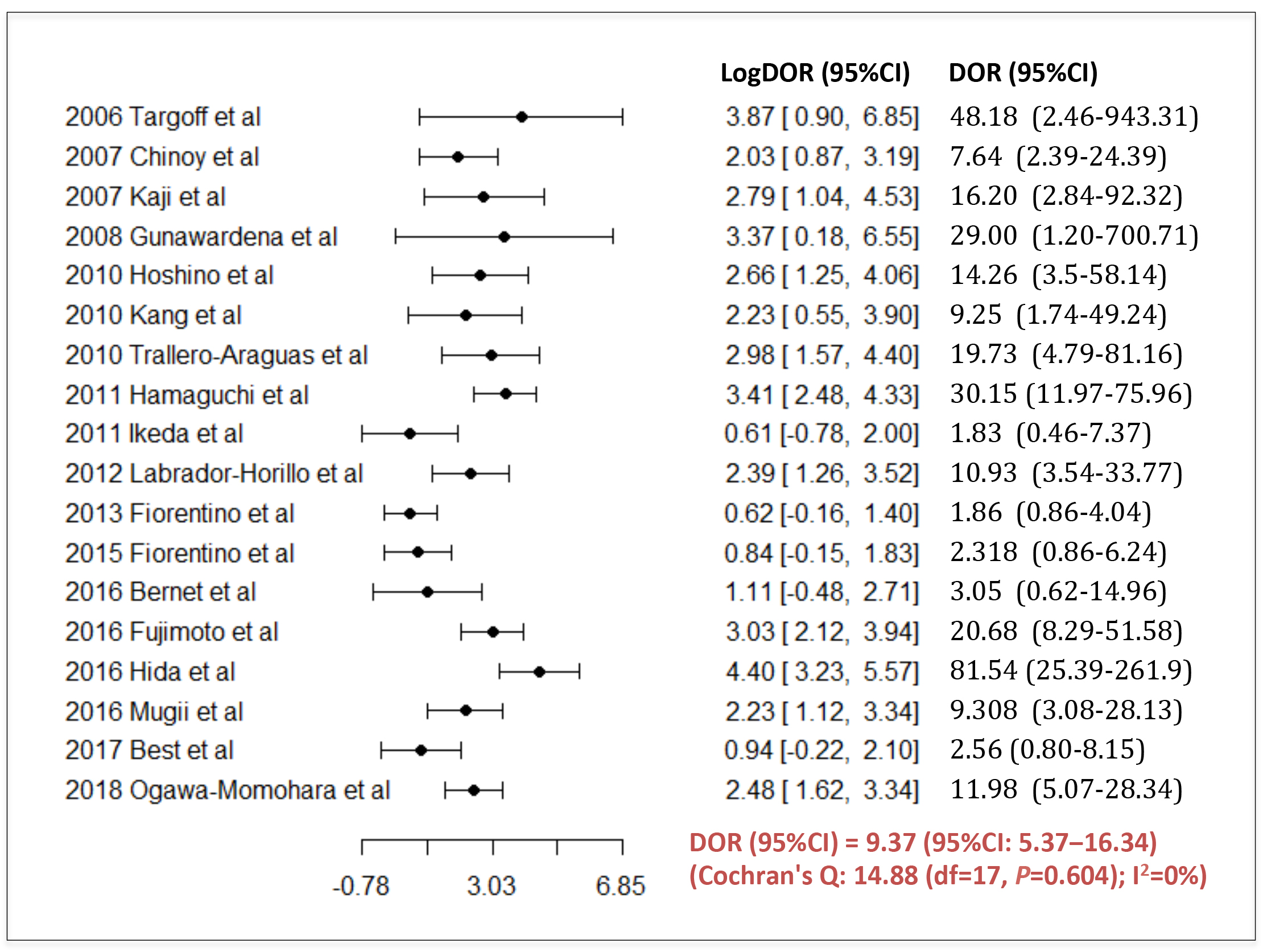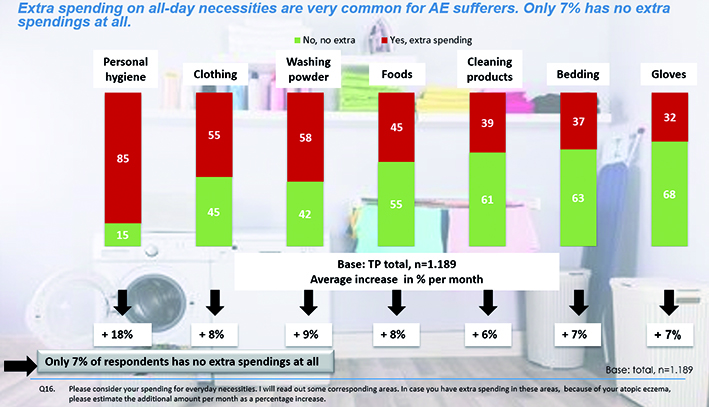Content - Volume 99, Issue 3
You can find all new content after October 1 on our new website, you can find it
here.
Editor's choice in this issue
REVIEW
Marion Best, Nicolas Molinari, François Chasset, Thierry Vincent, Nadège Cordel, Didier Bessis

- The presence of myositis specific autoantibodies could allow to identify a subset of adult patients with dermatomyositis (DM) associated with high risk of cancer.
- Anti-transcriptional intermediary factor-1gamma (TIF-1γ) autoantibody seems to be significantly associated with cancer in adult patients with DM.
- In this meta-analysis including 18 studies with a total of 1962 DM, the pooled prevalence of cancer in patients with anti-TIF-1γ autoantibody was 0.41 [95%CI 0.36 - 0.45].
- The global diagnostic odds ratio of cancer in presence of anti-TIF-1γ autoantibody was 9.37 (95%CI 5.37 – 16.34).
Pages: 256-262
CLINICAL REPORT
Alexander G.S. Zink, Bernd Arents, Antje Fink-Wagner, Irmtraud A. Seitz, Ute Mensing, Niels Wettemann, Giuseppe de Carlo, Johannes Ring

Atopic eczema is a skin disease with a huge impact on the everyday lives of affected patients’ and their families, but little awareness in the general population. This study including 1,189 people with atopic eczema living in 9 European countries found that extra out-of-pocket spending due to the atopic eczema is another setback with a mean amount of €927 spent by every patient per year. Out-of-pocket costs are a substantial burden in atopic eczema and much higher than in other chronic diseases. These costs should always be taken into account in individual as well as economic assessments of the disease.
Pages: 263-267
All articles
ERRATUM
Abstract is missing (Erratum)
Page: 0
REVIEW
Marion Best, Nicolas Molinari, François Chasset, Thierry Vincent, Nadège Cordel, Didier Bessis
Anti-transcriptional intermediary factor-1γ (TIF-1γ) autoantibody may be associated with cancer in adult patients with dermatomyositis. The aim of this study was to evaluate the risk of cancer in the presence of anti-TIF-1γ autoantibody in adult dermatomyositis. A comprehensive database search of EMBASE, MEDLINE and the Cochrane Library up to May 2018 was performed using the main key words “d ...
Pages: 256-262
CLINICAL REPORT
Alexander G.S. Zink, Bernd Arents, Antje Fink-Wagner, Irmtraud A. Seitz, Ute Mensing, Niels Wettemann, Giuseppe de Carlo, Johannes Ring
Atopic eczema (AE) is one of the most common non-communicable inflammatory skin diseases, and has a huge socioeconomic impact. Studies on the everyday economic impact of AE on patients, however, are limited. To estimate the annual extra out-of-pocket spending due to AE among patients in Europe, a cross-sectional study using computer-assisted phone interviewing of patients with AE was performed in ...
Pages: 263-267
CLINICAL REPORT
Akihiko Ikoma, Toshiya Ebata, Laurent Chantalat, Kimitoshi Takemura, Fabienne Mizzi, Michel Poncet, Didier LeClercq
Three clinical studies were conducted to test a newly-developed app for smartwatches, which included an algorithm to measure nocturnal scratching using acceleration data. The first study in 5 patients with atopic dermatitis demonstrated high reliability of the app for measurement of scratching compared with video monitoring (positive predictive value 90.2 ± 6.6%, sensitivity 84.6 ± 10.2% ...
Pages: 268-273
CLINICAL REPORT
Christoffer Blegvad, Anne-Marie Nybo Andersen, Abdulfatah Adam, Claus Zachariae, Lone Skov
Psoriasis is associated with cardiometabolic comorbidity; however, whether this is due to common lifestyle-related risk factors is unclear. This study investigated the association between psoriasis and cardiometabolic comorbidity, taking body mass index and smoking into account. The population comprised expectant mothers in the Danish National Birth Cohort (established 1996–2002). During pregnan ...
Pages: 274-278
INVESTIGATIVE REPORT
Flavien Huet, Marie-Sarah Faffa, Florence Poizeau, Stéphanie Merhand, Laurent Misery, Emilie Brenaut
The objective of this study was to explore characteristics of pruritus in atopic dermatitis (AD) in relation to the severity of AD. A web-questionnaire was used, which included the Patient-Oriented SCORing Atopic Dermatitis index, the 5-D itch scale and the Brest questionnaire. A total of 170 participants were included (86.5% women, mean age 30.9 years). Severity of AD was mild for 8.2% of patient ...
Pages: 279-283
INVESTIGATIVE REPORT
Sunyoung Kwon, Ji Young Choi, Jung-Won Shin, Chang-Hun Huh, Kyoung-Chan Park, Mi-Hee Du, Sungroh Yoon, Jung-Im Na
The aim of this study was to evaluate changes in the skin surface microbiome in patients with atopic dermatitis during treatment. The effect of narrowband ultraviolet B phototherapy was also studied to determine the influence of exposure to ultraviolet. A total of 18 patients with atopic dermatitis were included in the study. Patients were divided into 2 groups based on treatment: 1 group treated ...
Pages: 284-290
INVESTIGATIVE REPORT
Athanasios Tsianakas, Nadine Nippe, Christina Maria Hamper, Anna Friederike Cordes, Claudia Zeidler, Martin Schmelz, Sonja Ständer
Chronic pruritus can be a diagnostic sign of an underlying disease. In the intracutaneous histamine test, histamine (one of the best-known inducers of pruritus) may cause different reaction patterns depending on the underlying disease. The aim of this study was to determine if an intracutaneous injection of histamine can differentiate between the causes of chronic pruritus and thus be used as a di ...
Pages: 291-297
INVESTIGATIVE REPORT
Takashi Hashimoto, Kent Sakai, Kristen M. Sanders, Gil Yosipovitch, Tasuku Akiyama
The Janus kinase 1/3 inhibitor tofacitinib has demonstrated an antipruritic effect in two phase III studies in psoriasis. However, the mechanisms behind this antipruritic effect are still unknown. We presently investigated whether tofacitinib affects spontaneous itch as well as expression of itch-related cytokines and epidermal nerve fiber density (ENFD) in the imiquimod-induced mouse model of pso ...
Pages: 298-303
INVESTIGATIVE REPORT
Tessa A. Kouwenhoven, Peter C.M. van de Kerkhof, Marijke Kamsteeg
Treatment of chronic pruritus can be a challenge for clinicians. Several systemic treatments have been suggested to reduce itch, such as gabapentinoids and antidepressants. The aim of this study was to assess the current practice of dermatologists regarding systemic treatment in patients with chronic pruritus, and to identify possible barriers in the prescription of these treatments. An online sur ...
Pages: 304-308
INVESTIGATIVE REPORT
Robert F. Ofenloch, Marie Louise A. Schuttelaar, Åke Svensson, Magnus Bruze, Luigi Naldi, Simone Cazzaniga, Peter Elsner, Margarida Gonçalo, Thomas L. Diepgen
The aim of this study was to investigate the association between socioeconomic status and the prevalence of self-reported skin and atopic diseases in the general population of 5 European countries. A random sample was drawn from the general population aged 18–74 years, based on electoral precincts. Socioeconomic status was estimated by combining net household income with the highest education of ...
Pages: 309-314
INVESTIGATIVE REPORT
Sinja Kristiansen, Åke Svensson, Linda Drevin, Ola Forslund, Christian Torbrand, Carina Bjartling
Studies on risk factors for penile intraepithelial neoplasia have been small in size, have not distinguished penile intraepithelial neoplasia from invasive cancer, and have relied on self-reported information. This study investigated risk factors for penile intraepithelial neoplasia in a cohort of 580 penile intraepithelial neoplasia cases and 3,436 controls using information from 7 Swedish regi ...
Pages: 315-320
INVESTIGATIVE REPORT
Yi Xiao, Xiaoyan Huang, Danrong Jing, Yuzhou Huang, Liping Chen, Xingyu Zhang, Shuang Zhao, Mi Zhang, Zhongling Luo, Juan Su, Yehong Kuang, Jie Li, Wu Zhu, Jianglin Zhang, Xiang Chen, Minxue Shen
The association of atopic dermatitis and chronic spontaneous urticaria with socioeconomic status has been little studied. The aim of this study was to investigate the prevalence of skin diseases and their association with socioeconomic status in adolescents in China. A cross-sectional study was conducted at Central South University, Changsha, China. All newly enrolled students underwent dermatolog ...
Pages: 321-326
SHORT COMMUNICATION
Emilie Fowler, Andrea Maderal, Gil Yosipovitch
Abstract is missing (Short communication)
Pages: 327-328
SHORT COMMUNICATION
Francesca Caroppo, Laura Ventura, Anna Belloni Fortina
Abstract is missing (Short communication)
Pages: 329-330
SHORT COMMUNICATION
Seon Gu Lee, Ji Hae An, Dong Hyun Kim, Moon Soo Yoon, Hee Jung Lee
Abstract is missing (Short communication)
Pages: 331-332
SHORT COMMUNICATION
Laura Huilaja, Minna Soronen, Anna Karjalainen, Kaisa Tasanen
Abstract is missing (Short communication)
Pages: 333-334
SHORT COMMUNICATION
Álvaro Iglesias-Puzas, Ana Batalla, Gonzalo Peón, Carlos Álvarez, Ángeles Flórez
Abstract is missing (Short communication)
Pages: 335-336
SHORT COMMUNICATION
Flora Dresco, François Aubin, Elise Deveza, Eugeniu Revenco, Laurent Tavernier, Eve Puzenat
Abstract is missing (Short Communication)
Pages: 337-338
CLINICAL REPORT
Niina Hieta, Samu Kurki, Marjut Rintala, Jenni Söderlund, Sakari Hietanen, Katri Orte
Abstract is missing (Short communication)
Pages: 339-340
SHORT COMMUNICATION
Hiromi Higaki-Mori, Yuichi Yoshida, Masanori Hisaoka, Chikako Nishigori, Masahisa Shindo, Osamu Yamamoto
Abstract is missing (Short communication)
Pages: 341-342
SHORT COMMUNICATION
Jemin Kim, Jihee Kim, Myeongseob Lee, Eui Ra Huh, Joohee Lim, Kook In Park, Sang Ho Oh
Abstract is missing (Short communication)
Pages: 343-344
SHORT COMMUNICATION
Luana Niculescu, Cristel Ruini, Jerome Srour, Suzanna Salzer, Ines Schönbuchner, Tanja von Braunmühl, Thomas Ruzicka, Ulrich Hohenleutner, Kathrin A. Giehl, Judith Fischer, Andreas Wollenberg
Abstract is missing (Short communication)
Pages: 345-346
SHORT COMMUNICATION
Katarzyna B. Gostyńska, Vamsi K. Yenamandra, Caroline Lindemans, José Duipmans, Antoni Gostyński, Marcel F. Jonkman, Jaap-Jan Boelens
Abstract is missing (Short communication)
Pages: 347-348
SHORT COMMUNICATION
Andrea Baczako, Veronika Krautheim, Tilo Biedermann, Thomas Volz
Abstract is missing (Short communication)
Pages: 349-350
SHORT COMMUNICATION
Florence Poizeau, Emilie Sbidian, Clotilde Mircher, Anne-Sophie Rebillat, Olivier Chosidow, Pierre Wolkenstein, Aimé Ravel, Claire Hotz
Abstract is missing (Short communication)
Pages: 351-352
QUIZ
Grigorios Theodosiou, Iva Johansson, Åke Svensson
Abstract is missing (Quiz)
Pages: 353-354
QUIZ
Caroline de Lorenzi, Gürkan Kaya, Sandrine Quenan
Abstract is missing (Quiz)
Pages: 355-356

